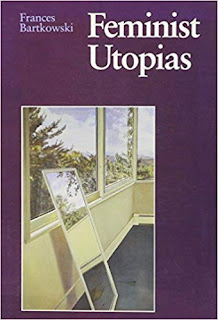Q: Growing up, how much did
you know about your grandfather's friendship with Crop Eared Wolf, and at what
point did you decide to write this book?
A: I knew my grandfather when
I was a small child, and still remember the sound of his voice and the smell of
his pipe as he told me stories.
After his death (at the age
of 90) in 1947, I grew up with stories about his life told by my mother (who
was born in 1899), as well as by my Metis godmother (who figures in my book),
my father, and my cousins (who were 20 and 25 years older than me and knew my
grandfather well.)
And stories were told to me
over the years by friends from the foothills of Alberta, who knew a lot about
the time and the place where he settled in 1885, and the history he was part
of. So in some ways the book has been with me, even though it was not yet
written, all my life.
I first thought about actually
writing a book 15 years ago, when I did an hour-long interview with the British
Broadcasting Corporation (BBC) about my grandfather’s time in the Old West,
where he first arrived as a homesteader in 1882.
They sent an interviewer to spend
a week with me in the foothills around Fort Macleod, south of Calgary––Blackfoot
territory––where my grandfather had settled in 1885, and had made friends with
many of the Blackfoot, as well as with the ranchers and cowboys who were
bringing cattle north from Montana to the grasslands north of the border along
what was called the Whoop-Up Trail, and with the North-West Mounted Police who
had come to the west a decade earlier to stop the whiskey that was being
brought north by traders along the same trail and wreaking havoc in the Indian communities.
The police also came to make
peace with the Indians, establishing what the government described as “law and
order” on the prairies in order to make way for the railway which was being built
across Blackfoot land and for the settlers who were beginning to arrive from
eastern Canada and the United States.
In fact, the Blackfoot had
lived in an orderly society with strict laws and stern punishments for hundreds
of years, and for the next few decades their chiefs continued to “police” their
people in ways that conformed to their own tribal customs, at the same time
establishing a remarkably good working relationship with the North-West Mounted
Police (the forerunner of the RCMP).
In the radio program, I told
what I knew of the story of my grandfather and his friends, both native and
newcomer, and of the dreams and disappointments of the communities that
developed there; and I interviewed Blackfoot elders and chiefs about those
earlier times.
But I came to this book––The
Banker and the Blackfoot: An Untold Story of Friendship, Trust and Broken
Promises in the Old West––much more recently, when I was thinking less about
the past than about the present, and how division and distrust and disrespect
have become so common and belief in the future so scarce around the world.
I was looking for a time and
a place in the past that might offer hope for the future of our countries and
our communities––and my grandfather’s life in the foothills of Alberta at the
end of the 19th century seemed to offer that, and to provide an example of
first peoples and new peoples living together in ways that defied the forces
designed to pull them apart.
It certainly wasn’t a perfect
time; but it was a time when many people were looking for solutions rather than
problems and friendships rather than feuds, and included Sun Dances and social
dances, bibles and medicine bundles, drums and piano recitals, horse races and
polo matches, and rodeos and roundups to celebrate both the horse culture of
the Blackfoot and the skills of the cattle range.
Also, it was a place full of
remarkable characters and contradictions, which made it fascinating for a
storyteller.
Q: How did you research the
book, and what did you learn that particularly surprised you?
A: In writing the book, I
tried to recall the stories I had heard and the ways in which they were told as
accurately as possible, and to imagine my grandfather’s life and the complex
and often contradictory lives of the people of the Old West where he lived, the
friends he made and the challenges he faced and the ways in which storytelling
shaped the lives of his fellow settlers and his Blackfoot friends, and offered
common ground between them.
And then I talked with
everyone else I could track down, including some who remembered him and the
ranching community he supported.
I read widely in the formal
written histories of the period, and (as importantly for this book) in local
reminiscences (of which I discovered a remarkable number,) each offering new
insights into the period, its characters, its conflicts and its sense of
community.
And of course I spent time
there; and even though it was over a century since my grandfather lived there,
many of the sounds and the sights and the beauties of the grasslands and the
foothills and the mountains–-from sacred Chief Mountain in Montana to the
Rockies in Alberta, called by the Blackfoot “the backbone of the world”––took
hold of me, as I believe they did my grandfather.
One thing that particularly
surprised me, and forms the storyline of my book, was the friendships that
developed there.
For the Blackfoot, it was an
extraordinarily difficult time––with the buffalo, upon which they had relied
for their spiritual as well as material well-being for as long as anyone could
remember, now gone from the northern plains; with settlers coming into their
territory in increasing numbers; and with new diseases devastating many of
their communities.
But they responded not by
looking for whom to blame, but for what to do next; and although they were
fierce warriors they made peace with the newcomers, because they trusted them.
Within a couple of decades, that trust turned out to be sadly misplaced when
the government broke almost all of its promises; but for a time––and with the
surprising support of the newly arrived North-West Mounted Police, some of the
missionaries, and many of the rancher and others who had settled in the
foothills communities––they established friendships and shared their hopes for
the future.
Those friendships were often
remarkable, and went across all the lines that sometimes separate us, with black
ranchers like John Ware becoming a respected friend to almost every cattleman
in the territory and a legendary hero to all the rodeo cowboys who tried (almost
always unsuccessfully) to better him in riding and roping.
At the local bar in the
Macleod Hotel the lawyer Fred Haultain, first and only premier of the
North-West Territories, would rub shoulders with cowboys like Harry Longabaugh,
who had come north on a cattle drive from a spell in jail in Sundance, Wyoming to
work on one of the foothills ranches, before becoming restless and returning to
his old habits and haunts south of the border...this time as the Sundance
Kid.
Q: You write in the book
about the riding crop that Crop Eared Wolf gave your grandfather. What do you
see as the significance of that gift, and how would you characterize their
relationship?
A: The biggest surprise for
me was the friendship that developed between my grandfather Jack Cowdry (who
opened the first private bank in the territory, was first mayor of Fort
Macleod, and was also known as Sorreltop Jack, after the colour of his hair and
his favourite horse) and Crop Eared Wolf (son of the great Blackfoot warrior
and peacemaker Red Crow and his successor as chief of the Blood tribe).
Their friendship started with
a chance meeting, as friendships often do; it was nourished when Crop Eared
Wolf looked after him when he became snow-blind after a winter Chinook raised
the temperature by 50 degrees overnight and brought out a bright morning sun
shining off the ice and snow near Crop Eared Wolf’s home on the reserve; it flourished
when they shared a mischievous escapade in defence of the Blood land; and it
was confirmed by the gift of a ceremonial quirt (or riding crop) that Crop
Eared Wolf had carved and painted.
The quirt celebrated the
remarkable story of Crop Eared Wolf’s heroic exploits in war parties against
old enemies such as the Sioux, the Shoshone, the Cree and the Crow, and his
courage on raids to bring home their best horses, which he did with such flair
and finesse that his exploits were admired by the same officers of the
North-West Mounted Police who were trying to wipe out that venerable plains
Indian tradition.
It also represented the
traditions of storytelling both in words and in the “writing without words”––the
woven and beaded belts and blankets, carvings and paintings, dancing and
drumming––that sustained the Blackfoot and gave them pride in their heritage in
those difficult times of challenge and change, offering a powerful counterpart
to the insistently triumphant storytelling of the newcomers.
Perhaps most importantly, it
symbolized the generosity of the Blackfoot, who had welcomed strangers into
their territory when they signed a treaty with Canada in a sacred ceremony in
which both sides made promises. They kept theirs. We broke ours.
Q: What do you hope readers
take away from the book?
A: I hope they take away a
sense of hope and possibility for all of us today as we try to find ways of
bringing diverse traditions and ambitions together within a sense of
community––local, regional and national.
I believe such achievements
always begin locally; and this story, taking place in a time and place which
had just experienced one of the greatest environmental disaster in human
memory, the collapse of the great buffalo herds once numbering in the tens of
millions; when the migration of people to the west was transforming not only
the landscapes but the lives of the first peoples of the plains; and with everyone
facing challenges from each other and as well as from the always unpredictable weather–-the
spring round-up in the foothills after my grandfather arrived became known as
the Big Die-Up because of the winter losses of cattle, many ranchers losing
over half their herds.
But they carried on in the
next season, helping each other and hoping for better times and not wasting any
energy on figuring out who to blame. They had learned a good deal about that
from the Blackfoot.
--Interview with Deborah Kalb






























